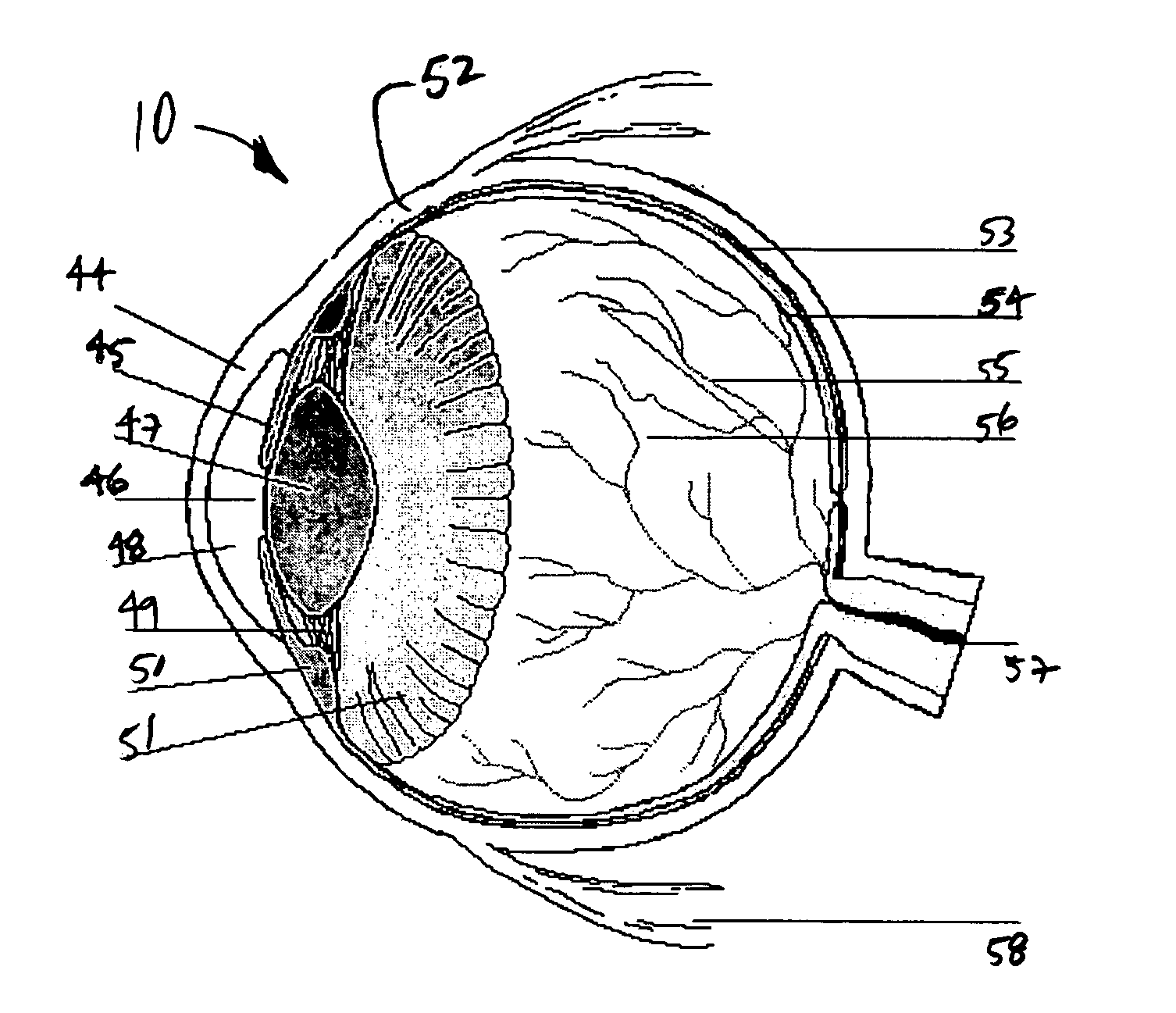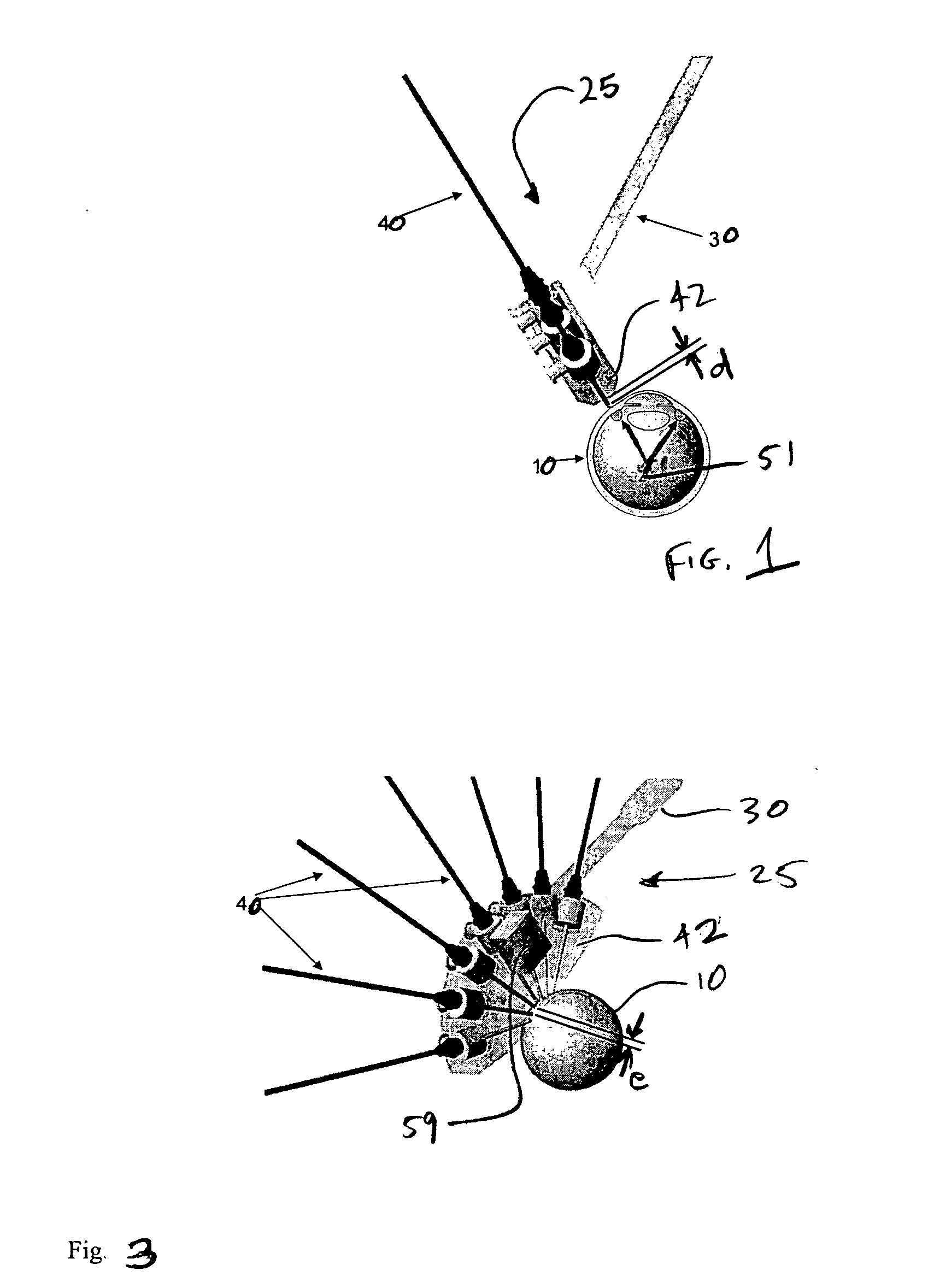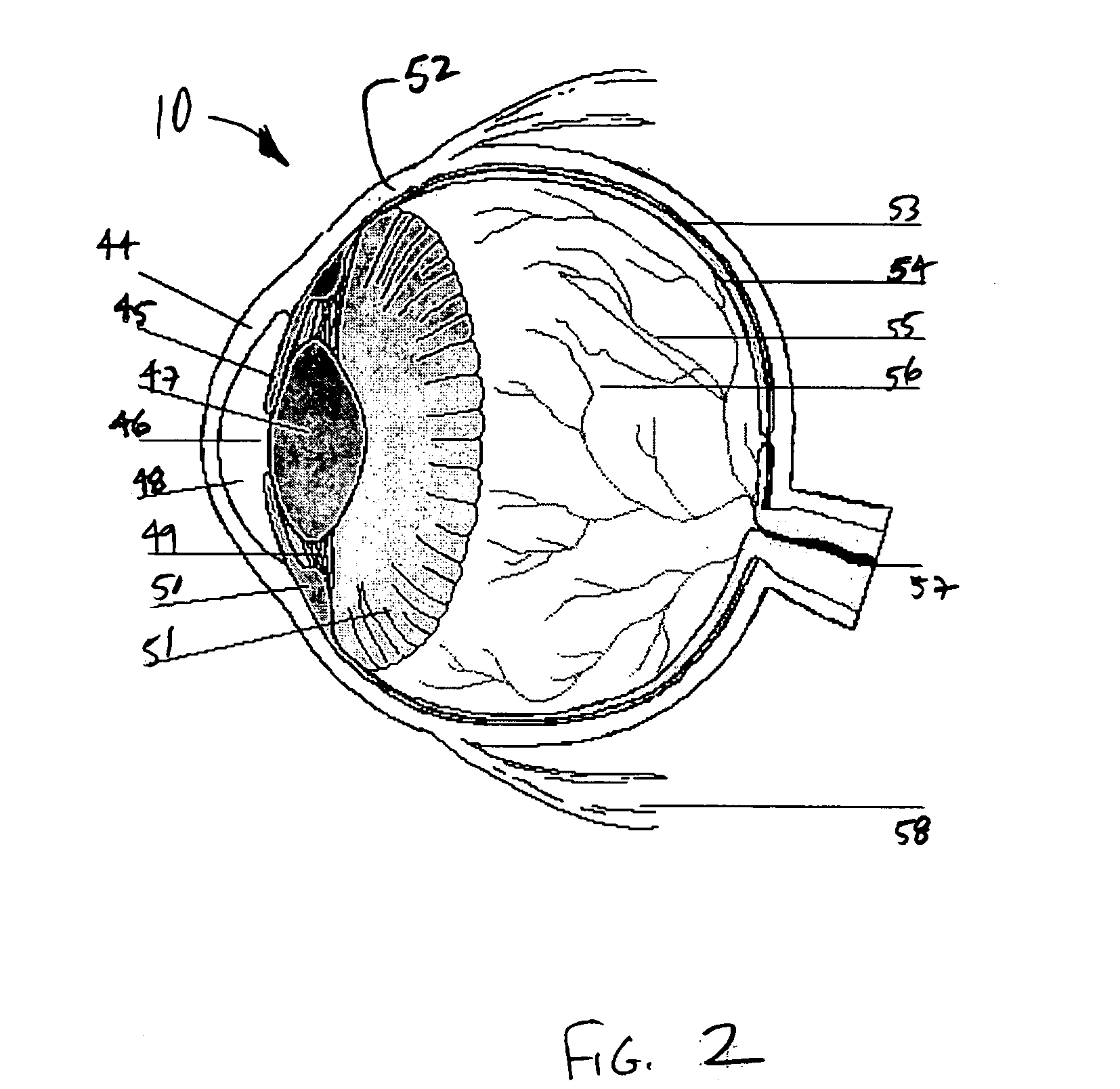Device for the irradiation of the ciliary body of the eye
- Summary
- Abstract
- Description
- Claims
- Application Information
AI Technical Summary
Benefits of technology
Problems solved by technology
Method used
Image
Examples
Embodiment Construction
[0022]FIGS. 1 and 3 show an eye 10 and an irradiation device 25 applying radiation to the eye 10. FIG. 2 shows a side cutaway view of the eye 10. Towards a front of the eye 10, light enters a cornea 44 which overlaps an iris 45 and a lens 46. The lens 46 and the iris 45 overlap the pupil 47, and an aqueous humor 48 overlaps the lens 46. Suspensory ligaments 49 connect the pupil 47 to a ciliary muscle 50 of a ciliary body 51. The ciliary body 51 is the structure in the eye 10 that secretes the aqueous humor 48, the transparent liquid within the eye 10. The ciliary muscle 50 changes a shape of the lens 46 when the eyes 10 focus. Towards a back of the eye 10, from outside to inside, a sclera 52 overlaps a choroid 53. The choroid 53 overlaps a retina 54. Between the retina 54 and the pupil 47 arteries, veins 55 and a vitreous humor 56 are present. An optic nerve 57 connects the back of the eye 10 to the brain, and an eye muscle 58 connects to the sclera 52 of the eye 10.
[0023] Referrin...
PUM
 Login to View More
Login to View More Abstract
Description
Claims
Application Information
 Login to View More
Login to View More - R&D
- Intellectual Property
- Life Sciences
- Materials
- Tech Scout
- Unparalleled Data Quality
- Higher Quality Content
- 60% Fewer Hallucinations
Browse by: Latest US Patents, China's latest patents, Technical Efficacy Thesaurus, Application Domain, Technology Topic, Popular Technical Reports.
© 2025 PatSnap. All rights reserved.Legal|Privacy policy|Modern Slavery Act Transparency Statement|Sitemap|About US| Contact US: help@patsnap.com



